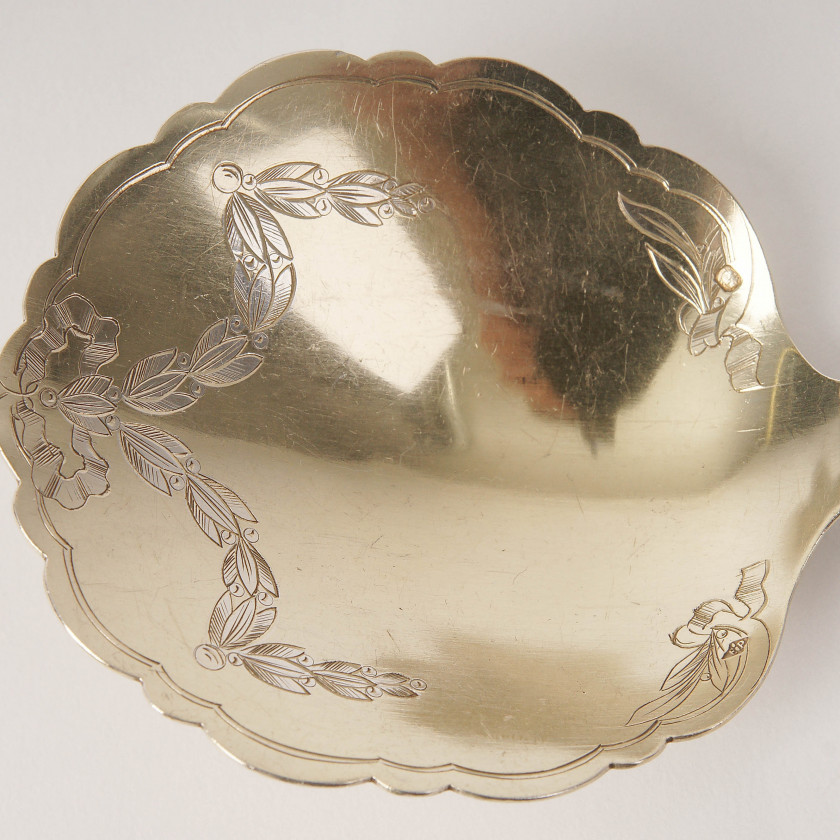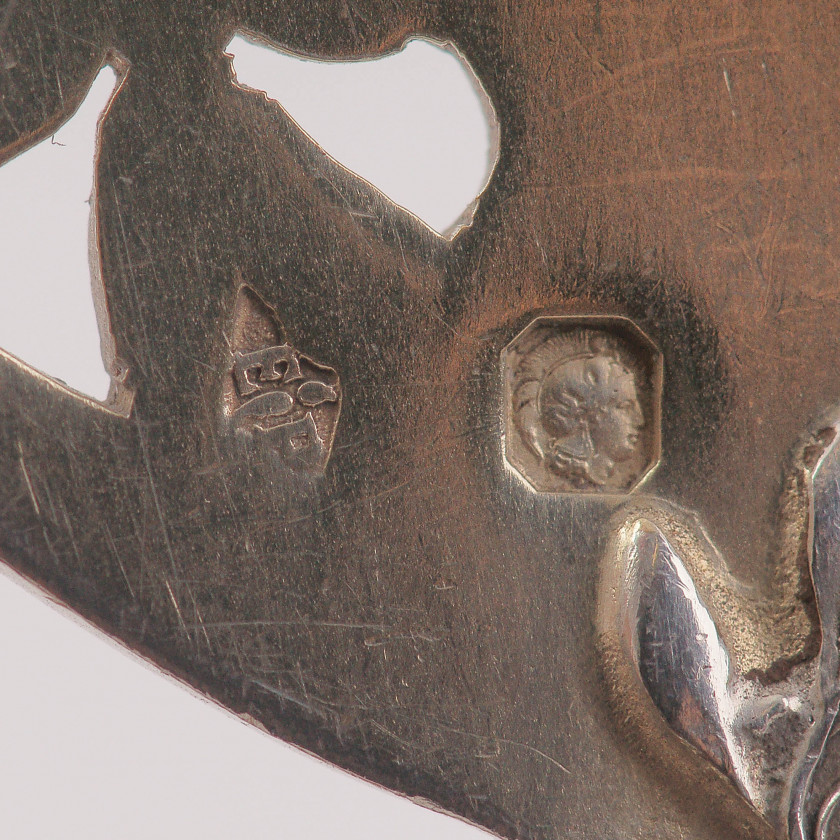Silver three-piece serving set
-
480 EUR
Artist/Maker: Emile Puiforcat (EP)
Artist/Maker Dates: 1820 - present
Place of Production: France, Paris
Date of Production: second half of 19th century
Materials: gilding, silver 950*
Weight: 260 gr.
Width: 26.0 cm.
Condition:
Condition notes: Wear consistent with age and use
Description
The renowned firm of Puiforcat was founded in 1820 by Émile Puiforcat who worked predominantly as a cutler with his brother Pierre-Joseph-Marie Puiforcat and their maternal cousin Jean-Baptiste Fuchs at rue Chapon in the Marais district of Paris. In 1857 Émile Puiforcat along with Jean-Baptiste Fuchs registered the company’s hallmark, composed as a diamond shape centred by a pocket knife in profile, flanked by the initials E and P (for Émile Puiforcat), as seen here. In 1892 Laure Emilie Puiforcat (b. 1873), granddaughter of the firm’s founder married Louis-Victor Tabouret (son of François-Louis Tabouret). Four years later in 1902 Louis-Victor assumed management of the firm and then in 1915 he changed his surname by decree to Puiforcat-Tabouret.
Interestingly this gallery once had the pleasure of owning a similarly styled silver tea and coffee set with eagle head spouts as well as swan-shaped handles (illustrated in “Richard Redding Antiques, Antique Collection 1994”, 1993, p. 99). The latter, likewise dating from circa 1890, was retailed by the Parisian firm of Boin-Taburet, which had been founded in circa 1875 by Monsieur Taburet as senior partner and Georges Boin (b. 1845). The former was almost certainly Ferdinand-Emile Taburet whose daughter Marie Adèle Taburet married Georges Boin in 1873. Although the surnames of Ferdinand-Emile Taburet and Louis-Victor Tabouret (who ran Puiforcat) and that of his father are spelled slightly differently, one wonders if they were related. This would not be surprising given that intermarriages between one family of specialised artisans and another was very common. It would also explain the similarities between Boin-Tabouret’s tea and coffee service and the present one.
By the late nineteenth century Puiforcat had moved into the high end of the silversmithing trade, gaining particular renown for creating pieces inspired by past historical masterpieces often from within the company’s own collection. However, it was Louis-Victor and Laure Puiforcat’s son Jean Elisée Puiforcat (1897-1945) who was to establish the company within the realms of avant-garde modern silverwork during the first part of the twentieth century. Having initially trained in London at the Central School of Art, Jean Elisée Puiforcat then studied under the sculptor Louis Lejeune and joined his family’s firm after the First World War. Named as a master silversmith in 1920 and an undisputed leader of the Art Deco style he became a founding member of the Union des Artistes Modernes in 1929. With his passion for sculpture and design, he introduced a revolutionary formal language that advocated adapting form to suit function - which was also an aspect achieved by his predecessors. His clear-cut style, characterised by pure, architectural lines, notable simplicity and the marriage of solid silver with other precious materials such as exotic woods, semi-precious stones and shagreen, inspired by Art Deco, was to prove the founding stone for contemporary high-end silverwork.
Shipping details
- Log in to see the cost for shipping this lot to your address.
Shipping methods are determined by item size, type, fragility and specific characteristics.
Shipping costs are calculated based on carrier rates, delivery distance and packing complexity.
Payment details
Doma Antikvariāts accepts the following payment methods:








